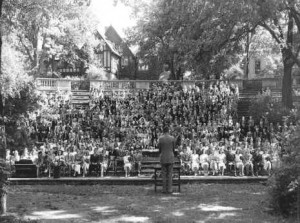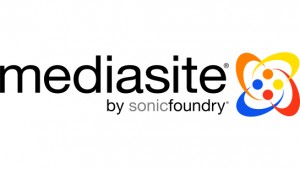Giving a presentation can be a daunting task for speakers. Here are a few tips on giving effective presentations using Microsoft PowerPoint.
- Less is more
It is important to avoid filling slides with a large amount of text. This can leave audience members overwhelmed and unengaged. Limiting your slide text to your main bullet points will provide the audience with an excellent visual reference, while also ensuring that they spend your presentation listing to you and not your reading slides. Giving out an informational handout given before a presentation is a good alternative to creating text-heavy slides.
- Make your presentation engaging
Speak directly to your audience. Do not simply read off slides. This is likely to bore your audience and stop them from being engaged. If you have trouble remembering everything you need to say, feel free to use the note’s text box. This Notes Field can be found underneath your slide within Power Point’s interface. By utilizing the note functionality, you will be able to see all of the information you need to reference without distracting your audience. Another option is to ask open-ended questions to the audience during the presentation. The more you can involve the audience in your performance while avoiding long intervals of straight lecture, the more they will remember and enjoy what you have presented.
- Use contrasting colors
One way to make sure that your presentation is easy to read is by using text that has a high color contrast with your background. Avoid using light-colored text on white backgrounds and darkly colored text on black backgrounds. The higher the contrast between your text and background color the less your audience will have to strain to read. Take time to check out free PowerPoint templates such as Civic, Capital and Waveform that already have great color contrast!
- Stay consistent
Keep slide backgrounds consistent throughout your presentations. Constant background template changes can make the presenter seem unprofessional, as their presentation lacks a clearly focused look and feel. Creating a master slide can help keep things consistent and speed up the creation process. Having one consistent master slide background will help your presentation’s cohesiveness, while also speeding up your creative process.
- Choose the correct font
Make sure to pick a font that’s easy for your audience to read. Try to use common “system” fonts to help avoid a missing font error between the computer you create the presentation on and the final presentation computer. The following are highly suggested: Lucida Console, Arial and Calibri. Remember not to use a custom font that you downloaded from the Internet. This font likely won’t be installed on the machine you are using for your presentation, and PowerPoint will compensate by choosing a default font, throwing your overall design way off. Stick to the fonts that come in PowerPoint’s initial library. If you are unsure how a font will read, do a test projection several days before your presentation, sit in the last row and see how it looks from the audience’s perspective.
- Build the presentation expecting outdated equipment
Sometimes a presentation will look good on a personal laptop but seem very disappointing when loaded onto an old computer/projected through an outdated projector. To compensate for this situation it is always a good idea to test your presentation in the environment, and with the equipment you will be utilizing for the presentation. This will allow you to make the adjustments needed to make your presentation look its best.
- Use animation sparingly
Animation between slides often looks gimmicky and unprofessional. It is best not to include it in a presentation unless you are emphasizing a particularly important slide.
- Insert video content correctly
Here are instructions from Microsoft on how to use YouTube with PowerPoint. https://support.office.com/en-us/Article/Insert-or-link-to-a-video-on-YouTube-8340ec69-4cee-4fe1-ab96-4849154bc6db
It is best to embed a link to YouTube as opposed to inserting a video directly into PowerPoint and scaling it this can lead to jumpy video behavior.
- Create the presentation with a purpose
While building your presentation it is important to remember your key objectives: what do you want your audience’s one to three main takeaways to be? By keeping this focus you will avoid straying off onto tangents that distract yourself and your audience from your purpose. A great practice is to begin your presentation by telling the audience what you want their major takeaways to be, give your presentation, and end with a summary slide reminding your audience what the major takeaways were. With this guidance, your audience is much more likely to interpret the presentation as you intended.
- Have a colleague proofread your presentation
It is very easy to miss spelling or grammatical errors in your presentation. Thus, it is always a good idea for a colleague to read your presentation and point out these errors. A colleague may also be able to point out structural problems that the creator of the presentation may overlook. A second opinion has the potential to improve presentation faults.
Practicing these tips will make your presentation much more effective. Good look on your future presentations!






